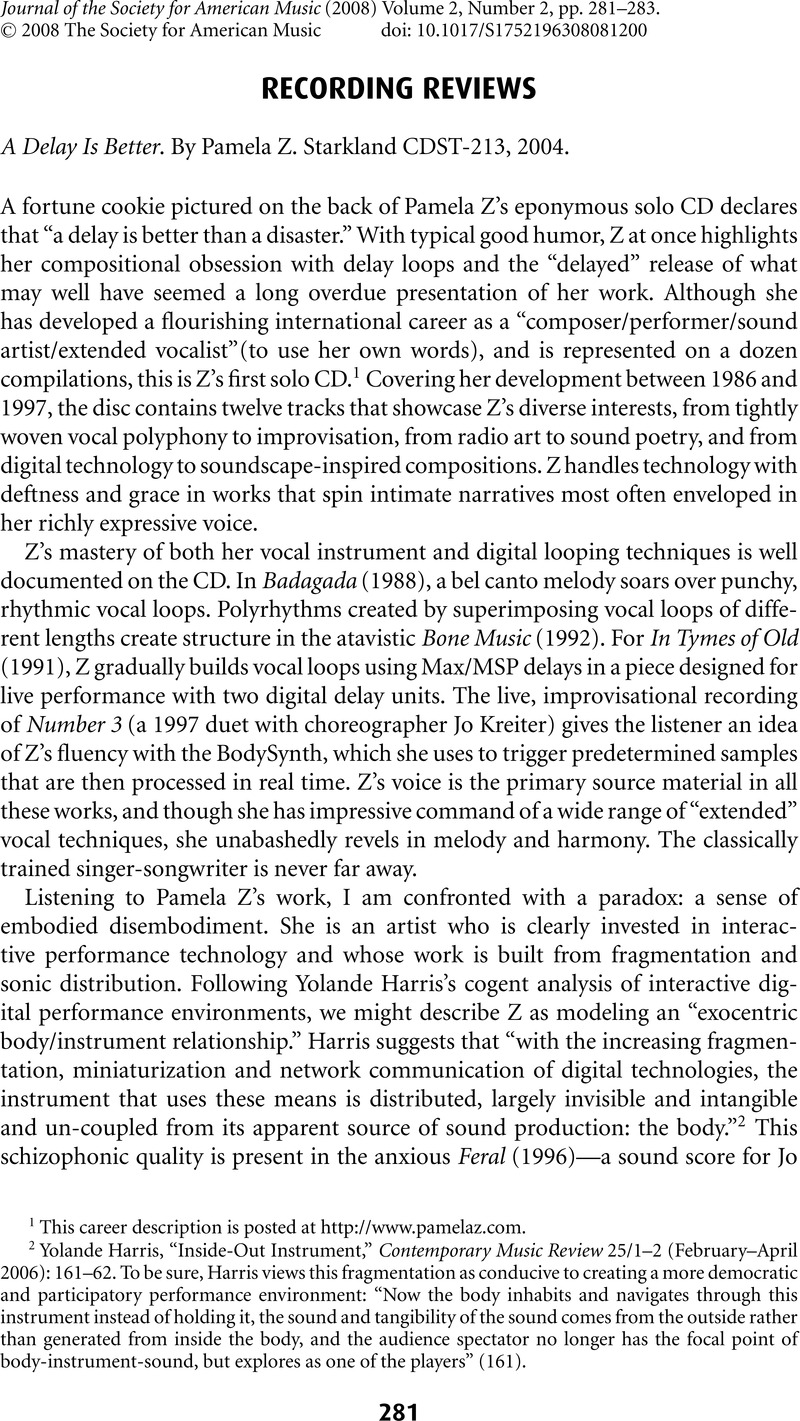No CrossRef data available.
Article contents
A Delay Is Better. By Pamela Z. Starkland CDST-213, 2004.
Published online by Cambridge University Press: 01 May 2008
Abstract

- Type
- Recording Reviews
- Information
- Journal of the Society for American Music , Volume 2 , Issue 2: Special issue on Technology and Black Music in the Americas , May 2008 , pp. 281 - 283
- Copyright
- Copyright © The Society for American Music 2008
References
1 This career description is posted at http://www.pamelaz.com.
2 Yolande Harris, “Inside-Out Instrument,” Contemporary Music Review 25/1–2 (February–April 2006): 161–62. To be sure, Harris views this fragmentation as conducive to creating a more democratic and participatory performance environment: “Now the body inhabits and navigates through this instrument instead of holding it, the sound and tangibility of the sound comes from the outside rather than generated from inside the body, and the audience spectator no longer has the focal point of body-instrument-sound, but explores as one of the players” (161).
3 Audio examples of Z's voice-over work are posted at http://www.pamelaz.com/vo.html#audio.
4 For a detailed analysis of Z's work, see George E. Lewis, “The Virtual Discourses of Pamela Z,” Journal of the Society for American Music 1/1 (February 2007): 57–77.
5 Pauline Oliveros, “Tripping on Wires: The Wireless Body: Who is Improvising?” Critical Studies in Improvisation/Études critiques en improvisation 1/1 (2004), http://www.criticalimprov.com.
6 Pamela Z, “A Tool Is a Tool,” in Women, Art, and Technology, ed. Judy Malloy, 348–61 (Cambridge, Mass: MIT Press, 2003), posted at http://www.pamelaz.com/tool.htm.




